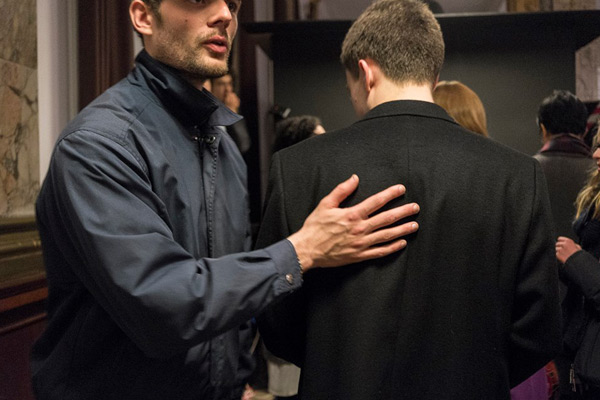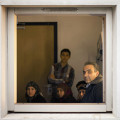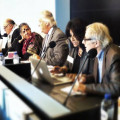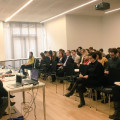Want to be a migrant for an hour? Art can help you do that. Medex Museum’s latest experiment.
A poster at the entrance of the exhibition invites the visitors to stop being themselves and become the person described on the leaflet they have been handed just a few seconds before, which should represent their new ID. Someone is Hanan, a fourteen-year-old teenager travelling from Aleppo with his family; someone else is Haytham, a Palestinian musician who was forced to leave Gaza after his only son was killed by Hamas. The concept is fairly simple but tremendously powerful. Get rid of being who you are and put yourself in the shoes of someone fleeing his/her country. Many people did on Saturday March 5th 2016, while attending this interactive experimental art exhibition organized by the Medex Museum in the framework of the 2016 Museum Night Fever (MNF) in Brussels.
For the second year running, the Medex Museum (Musée Ephémère de l’Exile) entertains and shocks the Brussels public with an interactive art installation that places the visitor at the core of the expo, making them the only real actors in the exhibition. Last Saturday these actors were invited to be migrants for little more than an hour, and to experience their journey with all the consequential hardships, not least the interplay with the institutions.
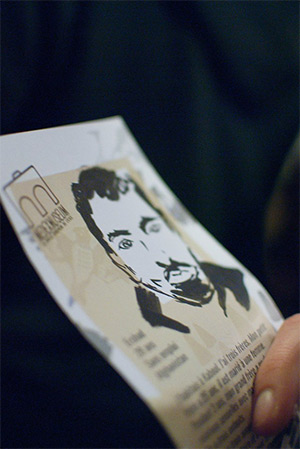
One of the IDs given to the participants with a portait of the participant himself. Credits: Medex/Maria Garcia
To get into the mood, the initial part of the pathway is composed of illustrations and paintings created by the members of the art collective and matched with asylum seekers’ thoughts, poems and ballads. You are free to wander around the colourful tableaux until you get stuck in line. A few minutes later you are required to insert your ID into a tall paper carton box and bend over it, where your image gets reflected into a semi-transparent sheet of foil: underneath, an illustrator is drawing your face on the ID’s section left of the picture. Your ID is back with you and there you are, standing in line again. After some ten minutes, a group of ten is allowed into a small, low-ceilinged, makeshift claustrophobic dark room, where sinister sounds and lights (successfully) attempt to reproduce the sea crossing most migrants are forced to experience. A veil of fear and restlessness starts covering everyone’s face: it’s too warm, too dark, too uncomfortable and somehow unsettling.
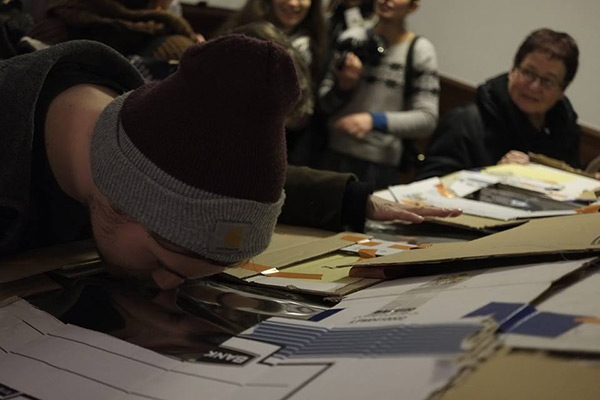
One of the participants bending on the makeshift “photobooth” where all participants got their ID portait sketched by Medex illustrators. Credits: Medex/Teo Becher
We are out again and here is another line. This time it is going to be a tough one. A desk with two “public officials” is ahead of us and they do not look too kind. They only speak French and if you do not, you’d better find an interpreter on the spot. They take your ID and ask you who you are: many do not think too much about it and their real name slips swiftly through their lips. A stamp is loudly made on your ID and your asylum application is quickly rejected. Some are more thoughtful and try to remember the story and the names that appear on their “new” ID, but many are hesitant. A bad stamp, again. After this stop, people’s expressions tell they are ashamed, worried, but most of all they are silent. It did not go well, they know it. And it is in this exact moment that they realize they have indeed become migrants for a handful of minutes, and it certainly does not feel alright.
But it is only a Saturday evening in Brussels and the installation is nearly over. Two big guards in dark coats and menacing sunglasses show you the way out. Outside two big tents are waiting for you and, inside, pictures shot in the Calais “jungle” are hanging on a long string that runs parallel to the ground. You have seen those pictures thousands of times on TV, on magazines, on Facebook, but this time you “feel” them differently.
Migrants are then not flat, passive pawns to you anymore. They are real people who choose, think, feel and fight. They are agents of their own (miserable) life.

